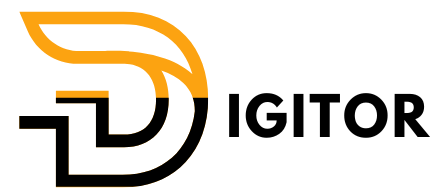Keeping WordPress Sites Secure: Best Practices for Developers
Introduction: The Importance of WordPress Security for Developers
Building multilingual websites with WordPress: WordPress is one of the most popular content management systems globally, but its widespread use makes it an attractive target for hackers. For developers, ensuring the security of WordPress sites is not only essential for maintaining the integrity of the site but also for building trust with clients and users. This guide will explore best practices for keeping WordPress sites secure, focusing on practical tips developers can implement to safeguard websites and their data.
Looking for professional assistance with WordPress security? Contact us for expert support!
Why WordPress Security Matters
WordPress powers over 40% of the internet, making it a prime target for malicious actors. Hackers may exploit vulnerabilities in plugins, themes, or WordPress itself, leading to data breaches, defacement, or even the complete shutdown of a website. Developers play a critical role in securing WordPress sites by implementing preventive measures and regularly updating security protocols.
Best Practices for Keeping WordPress Sites Secure
1. Keep WordPress Core, Plugins, and Themes Updated
One of the simplest yet most important security measures is ensuring WordPress core, plugins, and themes are always up to date. Developers should regularly check for updates, as each update often includes security patches that protect against newly discovered vulnerabilities.
2. Use Strong Passwords and Enable Two-Factor Authentication
Weak passwords are one of the most common ways attackers gain unauthorized access to WordPress sites. Developers should encourage clients to use strong, unique passwords for all user accounts and enable two-factor authentication (2FA) for added security.
3. Limit Login Attempts
By default, WordPress allows unlimited login attempts, making it easier for hackers to guess passwords through brute-force attacks. Developers can install plugins like Limit Login Attempts Reloaded to limit the number of login attempts, reducing the risk of successful attacks.
4. Install a Reliable Security Plugin
Security plugins such as Wordfence, Sucuri, or iThemes Security offer a variety of features, including firewall protection, malware scanning, and security monitoring. Developers should install a trusted security plugin and configure it to enhance the site’s security.
5. Backup Your Site Regularly
Regular backups ensure that in case of a security breach, the website can be restored to its previous, secure state. Developers should set up automated backups and store copies in a secure, off-site location, ensuring that all critical data is preserved.
6. Set Proper User Roles and Permissions
WordPress allows multiple users with different roles, from administrators to contributors. Developers should ensure that only authorized users have access to sensitive areas of the site. By assigning appropriate user roles and permissions, you can prevent unauthorized access.
7. Use SSL Certificates
SSL (Secure Sockets Layer) encrypts data transmitted between the server and users, protecting it from being intercepted by hackers. Developers should install an SSL certificate on WordPress sites to secure login credentials, transactions, and sensitive user information.
8. Secure the wp-config.php File
The wp-config.php file contains sensitive configuration settings for the WordPress site. Developers should ensure this file is stored outside the web root directory to make it harder for attackers to access. Additionally, developers can add extra security by setting file permissions to read-only.
9. Disable Directory Listing
By default, WordPress does not allow visitors to view the contents of directories. However, if directory listing is enabled, hackers can potentially view files and exploit vulnerabilities. Developers can disable directory listing by adding the following line to the site’s
Monitoring and Responding to Security Threats
1. Set Up Activity Monitoring
Regular monitoring of WordPress activity helps to identify potential security threats. Developers should use activity logging plugins to track login attempts, user actions, and changes to core files. Monitoring helps detect suspicious activities early, minimizing the damage caused by a potential breach.
2. Conduct Regular Security Audits
Regular security audits should be a part of ongoing site maintenance. Developers should assess the security of the site periodically by checking for vulnerabilities, reviewing user access levels, and ensuring that all security protocols are being followed.

Additional Tips for WordPress Site Security
1. Disable XML-RPC
XML-RPC is a feature that allows external applications to interact with WordPress. While it is useful for some applications, it can also be exploited by attackers for brute-force attacks. Developers should consider disabling XML-RPC unless it is essential for the website’s functionality.
2. Change Default WordPress Table Prefix
By default, WordPress uses wp_ as a prefix for database tables. Developers should change this prefix to something unique to reduce the risk of SQL injection attacks. This can be done during the installation process or by editing the wp-config.php file.
Why Security Is Crucial for Multilingual WordPress Sites
Multilingual WordPress websites, such as those created by developers for global businesses, often hold more complex data and a wider range of users. They may also include various plugins and themes for different languages, creating additional opportunities for security risks. Ensuring that multilingual websites are secured with strong passwords, updated plugins, and proper access controls is essential for preventing attacks that could impact multiple versions of the site.
Conclusion: Stay Ahead of Security Threats
Building multilingual websites with WordPress
WordPress security is an ongoing process that requires attention and diligence. Developers must stay informed about the latest security trends, regularly update WordPress installations, and implement best practices to protect the site from vulnerabilities. By following the best security measures outlined above, developers can build secure, reliable websites that protect users and their data.
Looking for expert help with securing your WordPress site? Contact us today for professional advice and security solutions.
External Resources – Building multilingual websites with WordPress
Wordfence Security Plugin
Sucuri Security Solutions
Explore more related articles to deepen your understanding and make informed choices about graphic design techniques
WordPress Website Developer: Expert Solutions for Your Online Presence
Custom WordPress Development: Tailored Websites for Your Business







